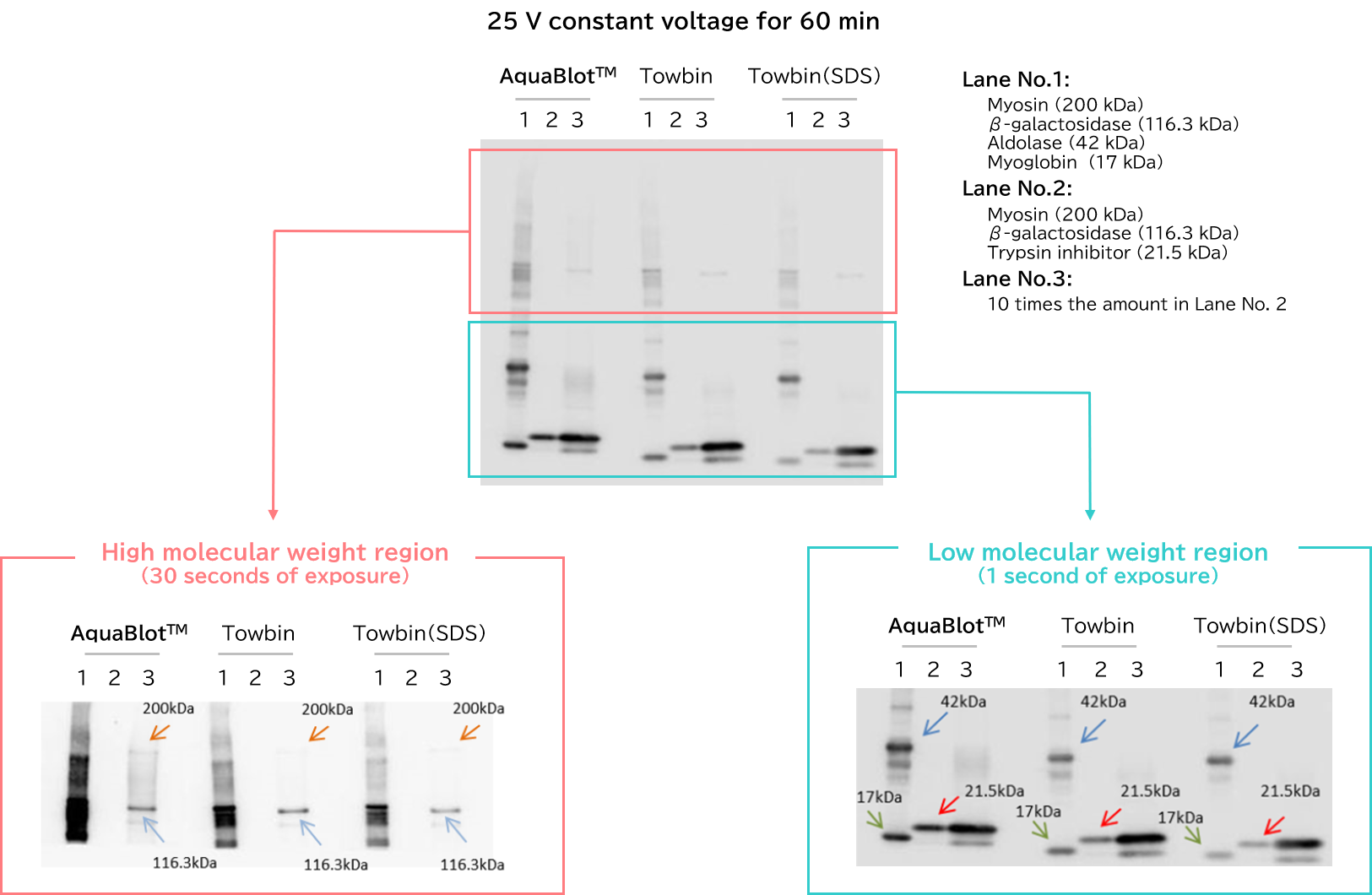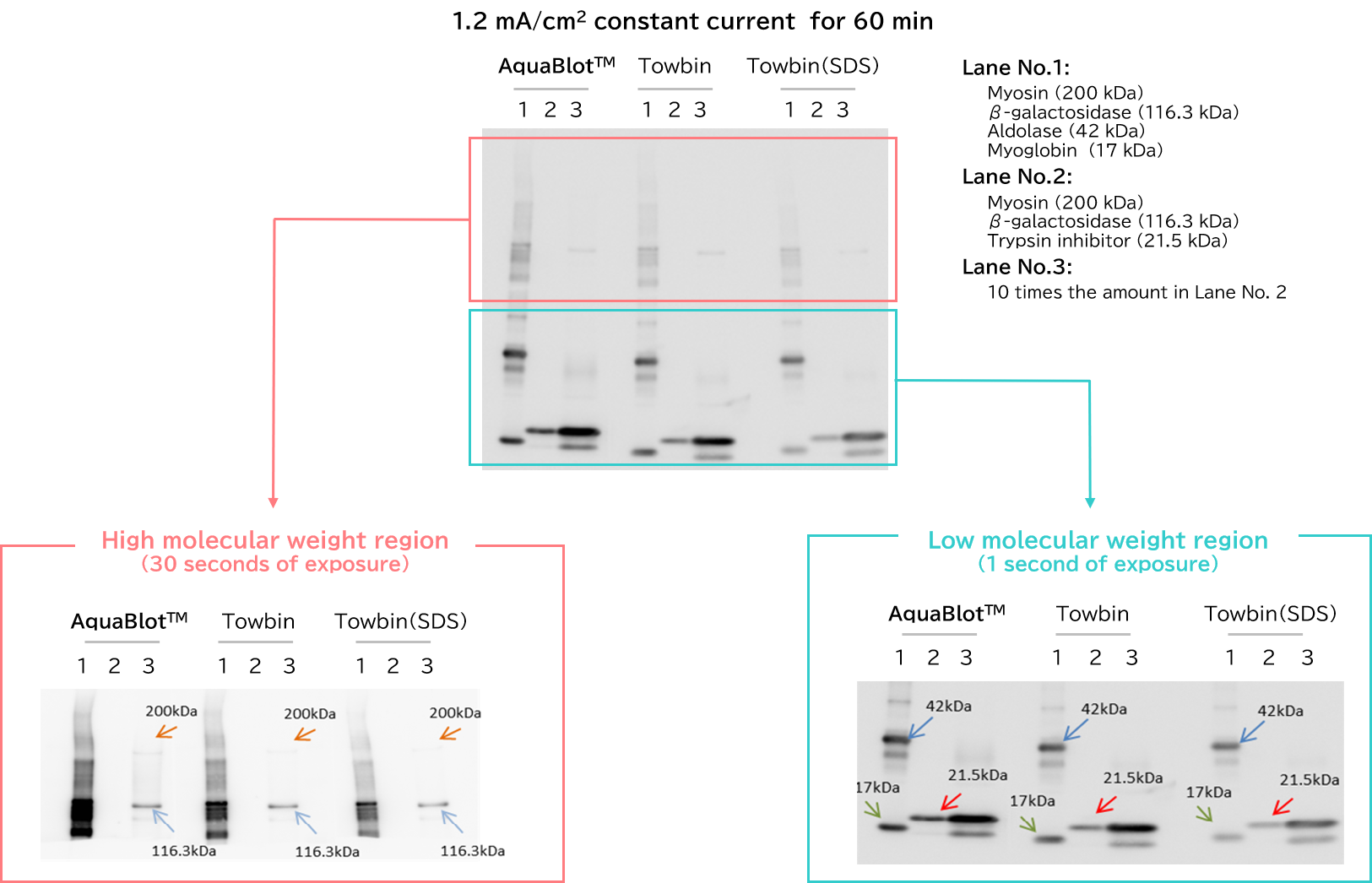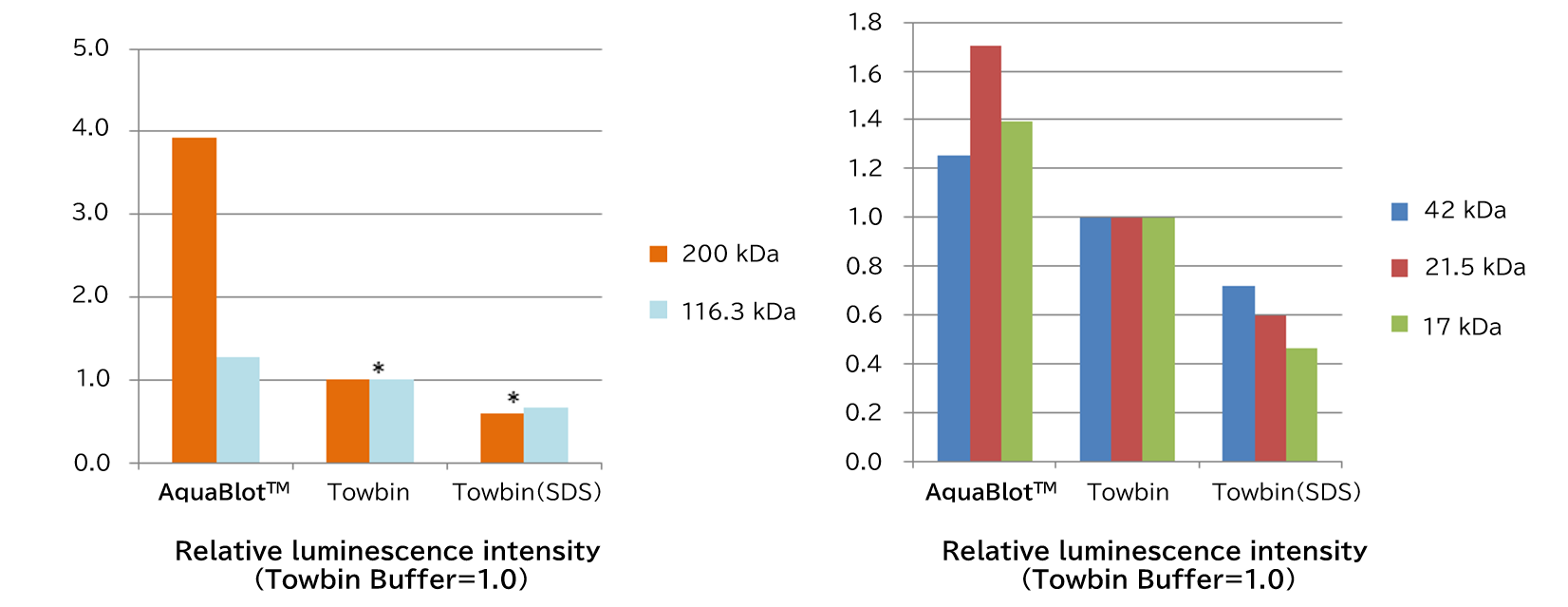Transfer Buffers
AquaBlot™ 10×High Efficiency Transfer Buffer is a 10 x transfer buffer with higher transfer efficiency than the conventional Towbin (tris-glycine) buffers. Use it after 10-fold dilution with deionized water. Addition of methanol is not required during preparation.
* Methanol is necessary for hydrophilization of the PVDF membrane.
Features
- Higher transfer efficiency than conventional products
- Simply change the transfer buffer
- No methanol needed
Comparison with conventional products
Method
After 60 minutes of (semi-dry) transfer at 25 V constant voltage, an appropriate exposure time for comparison of luminescence intensity was selected, and the luminescence intensity value of each protein was read and expressed as a relative value. After 60 minutes of (semi-dry) transfer at 25 V constant voltage, an appropriate exposure time for comparison of luminescence intensity was selected, and the luminescence intensity value of each protein was read and expressed as a relative value.
After the signals from low molecular weight proteins were read, the PVDF membrane was excised to measure the luminescence intensity of high molecular weight proteins, which require prolonged exposure, separately.
Results
Under constant voltage conditions, AquaBlot™ 10 x High Efficiency Transfer Buffer exhibited higher transfer efficiency than Towbin and Towbin (SDS) Buffers, in both the high and low molecular weight regions.


Conditions
-
- AquaBlot™
AquaBlot™ 10 x High Efficiency Transfer Buffer (10-fold dilution) - Towbin buffer
25 mmol/L Tris, 192 mmol/L Glycine with 10 v/v% Methanol - Towbin buffer(SDS)
25 mmol/lL Tris, 192 mmol/L Glycine, 0.05 w/v% SDS with 10 v/v% Methanol
- AquaBlot™
-
- Gel
SuperSep™Ace, 10-20%, 17 well (Product Number: 198-15041) - Membrane
ClearTrans® SP PVDF Membrane, Hydrophobic, 0.2μm (Product Number: 033-22453) - Chemiluminescence reagent
ImmunoStar® Zeta (Product Number: 295-72404)
- Gel
Method
After 60 minutes of (semi-dry) transfer at a constant current of 1.2 mA/cm2, an appropriate exposure time for comparison of luminescence intensity was selected, and the luminescence intensity value of each protein was read and expressed as a relative value. After the signals from low molecular weight proteins were read, the PVDF membrane was excised to measure the luminescence intensity of high molecular weight proteins, which require prolonged exposure, separately.
Results
Under constant current conditions, AquaBlot™ 10 x High Efficiency Transfer Buffer exhibited higher transfer efficiency than Towbin and Towbin (SDS) Buffers, in both high and low molecular weight regions.


Conditions
-
- AquaBlot™
AquaBlot™ 10 x High Efficiency Transfer Buffer (10-fold dilution) - Towbin buffer
25 mmol/L Tris, 192 mmol/L Glycine with 10 v/v% Methanol - Towbin buffer(SDS)
25 mmol/lL Tris, 192 mmol/L Glycine, 0.05 w/v% SDS with 10 v/v% Methanol
- AquaBlot™
-
- Gel
SuperSep™ Ace 10–20%, 17-well (Product Number: 198-15041) - Membrane
ClearTrans® SP PVDF Membrane, Hydrophobic, 0.2μm (Product Number: 033-22453) - Chemiluminescence reagent
ImmunoStar® Zeta (Product Number: 295-72404)
- Gel
Product List
- Open All
- Close All
For research use or further manufacturing use only. Not for use in diagnostic procedures.
Product content may differ from the actual image due to minor specification changes etc.
If the revision of product standards and packaging standards has been made, there is a case where the actual product specifications and images are different.
The prices are list prices in Japan.Please contact your local distributor for your retail price in your region.



